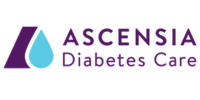Understanding Time in Range
Such as:
|
|
|
|
|
|
|
|
|
|
|
|
For this reason, a target glucose range is given to aim for, rather than a single number. It’s also important to understand that achieving glucose levels within this range 100% of the time is almost impossible and shouldn’t cause you to be disheartened.
The general glucose target range is:
Before meals 4-7mmol/L and when checking 2 hours after the start of a meal between 5-10mmol/L.
Glucose targets should be individualised so speak with your diabetes team to discuss yours.
With some CGMs monitoring glucose levels every minute, 24 hours a day, the sheer volume of data can be overwhelming. This is why, when assessing CGM data, it's more important to look at averages and patterns rather than individual numbers. This is where Time in Range can help.
What is Time in Range?
Time In Range or TIR, is the amount of time you spend with your sensor glucose levels within your target range and is represented as a percentage.
This range is usually set by your healthcare team and might be a bit different for everyone, but for many people, a common range is between 3.9 and 10.0 mmol/L. When your glucose levels are within this range, it means your diabetes is stable.
The general target Time in Range (TIR) for people with Type 1 and Type 2 diabetes who are not pregnant is to spend at least 70% of the time within the target range. To accurately calculate your TIR you need to have fourteen days of consistent sensor wear and readings.
Every 5% increase to your TIR is linked with significant health benefits such as fewer hypoglycaemia events and reduced risk for diabetes-related complications.
This graph demonstrates CGM TIR targets, aiming for at least 70% of the time with your glucose levels in target range (shown in green) with less than 4% below the target range (in red), and at most the remaining 25% above the target range (in yellow and orange).

Is TIR the same as HbA1c?
The short answer is no. However, there are some connections.
Unfortunately, HbA1c does not give any indication as to how much time you spent in hypoglycaemia. You can have a HbA1c of 7.0% with blood glucose levels between 4.0 and 8.0 mmol/L, but you can also have a HbA1c of 7.0% with BGLs between 2.0 and 22.0 mmol/L.
It is important to look at both TIR and HbA1c. Generally though, you can predict that if your TIR is high, your HbA1c is more likely to be in the target range too.
Research has shown that a TIR of 70% matches with an HbA1c of 7% (53 mmol/mol), whereas a TIR of 50% matched an HbA1c of 8% (64 mmol/mol).
Similarly, an increase of TIR of 10% (which is equivalent to 2.4 hours per day more time spent in range) corresponds to a decrease in HbA1c of around 0.5% (5.0 mmol/mol).
Higher percentages of TIR and lower HbA1c results, are associated with a reduced risk of the development of diabetes-related complications.
Using CGM can be a powerful tool to help you manage your diabetes. By understanding Time in Range and paying attention to your glucose trends, you can keep your levels more stable and stay healthier. Book an appointment with your diabetes educator or get in touch with the Diabetes Victoria Clinic if you're unsure how to use your CGM or interpret the data.
Consult a health care professional before making changes to your diabetes management.
If you would like an individual appointment with a credentialed diabetes educator, dietitian, exercise physiologist or psychology, you can book directly into our Diabetes Victoria Clinic here.
Sponsor acknowledgment
Thank you to the following campaign sponsors for sponsoring our National Diabetes Week 2024 articles.
Please note that the article content has been independently developed by Diabetes Victoria. Support from sponsors has allowed for resourcing and paid social media promotion of these articles.
Unless expressly stated otherwise, Diabetes Victoria does not endorse third-party products, services, offers, or any other information provided by third parties. You must undertake your own inquiries to determine the accuracy and relevance of any products, services, offers, or other information provided by third parties. Diabetes Victoria is not liable for any representations made by such third parties in relation to their programs, services, member benefits and offers, or their provision of such items.










